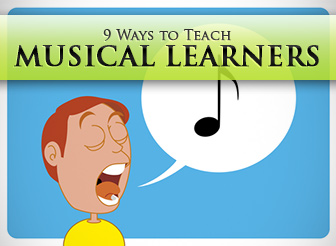ESL Learning Styles: 9 Ways to Teach Musical Learners


Where did Humpty Dumpty sit? Who helped put him back together after his tragic fall? If you know the answers to these questions, it is because you’ve repeated the famous nursery rhyme countless times. And THAT is the power of chants.
Chants are fun and easy to learn, mainly because they usually rhyme and can be easily repeated. But they are more than pure fun. Most are great sources of vocabulary and help improve pronunciation. Plus, they help restless students focus.
Here are some chants you can use in your ESL class in a variety of ways:

Classroom Rules Chant
Download this simple chant; you may even print it and make it into a poster. It’s a great, easy way to teach and review classroom rules with your students. Repeat it several times, and they won’t soon forget the rules.
My House
This is a fun way to teach the rooms in a house and some of the things you find in them.
Bedroom, bathroom, living room, kitchen.
Bedroom, bathroom, living room, kitchen.
Bedroom, bathroom, living room, kitchen.
This is my family’s house.
Sink in the bathroom. Sink in the kitchen.
Sink in the bathroom. Sink in the kitchen.
Sink in the bathroom. Sink in the kitchen.
This is my family’s house.
TV and sofa are in the living room.
TV and sofa are in the living room.
TV and sofa are in the living room.
This is my family’s house.
And you can easily expand the chant to other rooms in the house. As you can see, it doesn’t matter if the words don’t rhyme; the essential element in the chant is repetition.
Nursery Rhymes
Nursery rhymes are timeless classics that most people remember because they are repeated so often. TeachChildrenESL has nursery rhymes in PDF files that you can download and print for your class. Of particular use in the ESL classroom are:
Counting Bubble Gum
This chant/game will help your young learners practice their counting skills and have fun while they do it. Have your students sit in a circle on the floor. Go around the circle and tap each head as you say: Bubble gum, bubble gum, in a dish, how many pieces do you wish? (student says a number). Count the number of heads indicated and the last student is eliminated from the circle. This student must stand up and eliminate another in the same way. The last student left standing wins!
How many days?
This is the chant everyone learns to remember how many days are in each month – and a great way to practice them in English:
Thirty days has September, April June and November.
All the rest have 31, excepting February alone.
And it had 28 days time,
But in leap years February has 29.
Apples and bananas
Here’s a fun, but also challenging chant. Students review vowel sounds.
I like to eat, eat, eat apples and bananas
I like to eat, eat, eat apples and bananas
I like to ate, ate, ate ay-ples and ba-nay-nays
I like to ate, ate, ate ay-ples and ba-nay-nays
I like to eat, eat, eat ee-ples and bee-nee-nees
I like to eat, eat, eat ee-ples and bee-nee-nees
I like to ite, ite, ite i-ples and by-ny-nys
I like to ite, ite, ite i-ples and by-ny-nys
I like to ote, ote, ote oh-ples and bo-no-nos
I like to ote, ote, ote oh-ples and bo-no-nos
I like to oot, oot, oot oo-ples and boo-noo-noos
I like to oot, oot, oot oo-ples and boo-noo-noos
One, Two, Buckle My Shoe
Another great way to review numbers one to ten.
One, two,
Buckle my shoe;
Three, four,
Knock at the door;
Five, six,
Pick up sticks;
Seven, eight,
Lay them straight:
Nine, ten,
A big fat hen.
Grammar Chants
Now, here’s your chance to get creative and make your own chant! Remember that rhyming is not absolutely necessary, very often it’s the repetition that works best. Here’s an example of a chant you can say to practise simple present in both affirmative and negative forms:
Teacher: I
Class: I
Teacher: I see you.
Class: I see you.
Teacher: He
Class: He
Teacher: He sees you.
Class: He sees you.
Teacher: I
Class: I
Teacher: I don't see.
Class: I don't see.
Teacher: He
Class: He
Teacher: He doesn't see.
Class: He doesn't see.
Teacher: We
Class: We
Teacher/Leader: We speak English.
Class/Group: We speak English.
Students learn words, structures, and pronunciation. And don’t be surprised if you hear them chanting as they walk down the hall. They may not be able to get your chants out their heads!
Don’t forget that songs are just as effective in ESL teaching, in fact some of these rhymes may also be sung. At BusyTeacher.org we have over 300 songs and lyrics worksheets for your class!